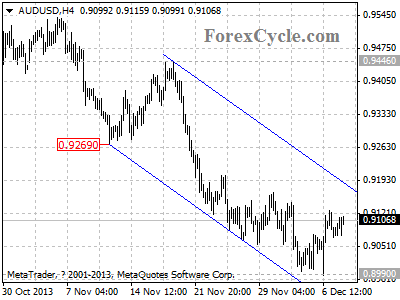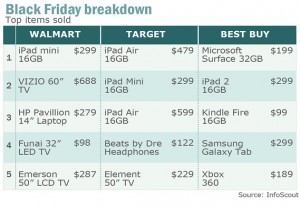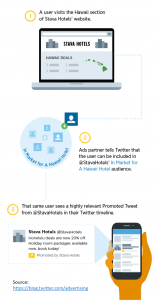Source: Brian Sylvester of The Gold Report (12/9/13)
https://www.theaureport.com/pub/na/warrants-warrant-more-respect-in-the-resource-sector-dudley-baker
Noting that the resource sector is poised to come back “big time,” Dudley Baker, editor and founder of CommonStockWarrants.com, makes the case for adding warrants to resource investment portfolios. In this interview with The Gold Report, he offers a tutorial on this underused investment vehicle, disabuses myths about warrants and shares the names of some warrants that warrant attention.
The Gold Report: Before we get into how to invest in warrants, please tell our readers what a warrant is.
Dudley Baker: Very simply, a warrant is a security that gives the holder the right, but not the obligation, to purchase the underlying common shares at a specific price and includes a specific expiration date.
TGR: How does that differ from a futures contract?
DB: A futures contract refers to the purchase of an actual commodity: gold, silver, soybeans, pork bellies, etc. Warrants also differ from call options. Those are derivative contracts written on a stock, stock index or futures contract.
The official definition of warrants states that they are securities, the distinction being here that a warrant is actually issued by the company.
TGR: Why do most investors overlook warrants?
DB: That has been a mystery for decades. Since the early 1980s, when the Chicago Board Options Exchange (CBOE) came into play, investors’ interest turned toward stock options—calls and puts. These days, it’s all about trading, and for brokers, it’s all about commission. Warrants were left out of the investment arena. They’re still great opportunities. My mission is to educate and explain the value of stock warrants.
TGR: What are the differences between trading warrants and private placement warrants
DB: Virtually every company in the resource sector has a warrant in its capital structure. Very few of those warrants actually trade; most are private placement warrants.
Private placement warrants serve as an equity kicker. I’ll use Rick Rule as an example. He would never do a transaction unless a long-term warrant was part of the equity package because he wants more bang for his buck. Unfortunately, many individual investors don’t have the opportunity to participate in private placements.
However, investors should know that there are roughly 200 trading warrants out there right now in the U.S. and Canada, not just in the resource sector, but across the board.
TGR: We’re in a depressed market for mining equities. Does market performance have an effect on the warrant market?
DB: Yes, if stocks are down, warrants will be down. That said, it’s all about the underlying company. For the warrant to do well, the company has to perform. We’re always looking for the upside leverage.
We’re looking for a 2:1 leverage. If an investor wants the common shares in a company to rise 100%, we want the warrant to perform 200%. That gives us a reason to buy the warrant in lieu of the common shares. It’s all about gaining more leverage with long-term warrants.
For the last couple of years, the market has not been kind to resource investors, whether it’s common shares or warrants. We see this whole sector coming back big time. Now is when investors want to start looking for long-term warrants on companies they like.
TGR: Why do mining companies, especially gold and silver equities, deal in warrants more than other sectors?
DB: The resource sector is highly capital intensive and high risk. Let’s face it, the companies need more incentive to get someone like Rick Rule and Sprott Global involved in a potential financing. They have to offer a long-term warrant as an equity kicker.
TGR: The warrant offsets risk.
DB: Exactly. In the resource sector, money goes into the ground and everybody hopes for the best. The people providing the financing, however, need more opportunity for the upside potential to outweigh the downside. The financiers know that many companies will not perform, so they require these equity kickers.
TGR: What’s the typical path to making money by investing in a warrant?
DB: The most straightforward, logical way is to pick the right company and buy its warrants. If the company doesn’t perform, the warrant can’t perform either.
On top of that, we need a good market environment or the expectation of a good market environment, which I think we have right now. I think most would agree that the next few years probably will be in favor of resource investors.
TGR: Are there other ways to make money with warrants?
DB: Yes, one is a dollar allocation. Take an investor who comes to us with a question as to how to invest $10,000 in a gold stock. The company also offers a long-term warrant. He could split the investment between the stock and the warrant. Depending on the leverage situation, that split could be 50/50, 80/20, or another combination, according to the investor’s risk/reward ratio.
There also are hedging opportunities in warrants. Instead of just buying the warrant, investors can buy the warrants and short the common shares. They could buy the warrants and sell puts against that position. They could actually short the warrants and buy call options. So they’re just trying to establish hedge positions here.
This works better in the U.S. markets. That is because American investors can’t exercise a warrant issued in Canada; U.S. investors can only trade Canadian warrants. A Canadian investor could probably short the shares.
I’d almost say, especially in the U.S., any time you are doing a hedge and you’re buying the common shares as your core position, basically you just substitute the company’s long-term warrant for the common shares, and you can accomplish that same hedge position with a lot less cash on the line, which means your net return will be substantially higher.
TGR: What are four things should investors be aware of before entering the world of warrants?
DB: First, warrants can expire. Once they’ve expired, they are worthless. I would recommend choosing only long-term warrants, which to me means a minimum of two or three years. This gives you more time for the markets to turn around and to capture the maximum gains.
Second, stick with companies that you like. Before buying common shares, ask whether the company has any long-term trading warrants, You may have to look into those yourself; not all newsletter writers are up on the opportunities warrants offer.
Third, before you buy a warrant, find out what the current leverage is. Is the warrant overpriced, fairly priced or undervalued? You don’t want to pay more than you have to.
Fourth is liquidity. The liquidity of warrants varies on a daily basis.
TGR: When you talked with The Gold Report in 2008, there was no exchange where warrants were traded. Are there some new resources that make warrants trading more transparent and, perhaps, simpler? Your website, CommonStockWarrants.com, is one resource. Are there others?
DB: The lack of information about warrants was one reason I started my service, and there has been progress. Today, warrants are traded like stocks on the Toronto Stock Exchange (TSX) and the TSX Venture Exchange (TSX.V) in Canada. Warrants for U.S. companies can trade on the New York Stock Exchange (NSYE) or on NASDAQ. Exchanges issue warrants a symbol, just like common shares.
TGR: They just have a longer ticker.
DB: It’s usually five letters or it will have a .WT, or in the U.S., it might have a -WS.
TGR: When an outstanding warrant is worth less than the current stock trading price, it can create an overhang on a stock. How do you play that situation?
DB: There is a perception, and probably rightly so, that outstanding warrants have a dilution effect on the common shares. Some people see that as a negative. We look at the upside leverage opportunity that warrants offer an investor. We know there will be slight dilution to the company’s shares if and when those warrants are exercised. We also know that means new cash coming into the company’s kitty. It’s a tradeoff.
TGR: But if a company is trading for $2/share and its warrant is trading at $1, why not buy the warrant instead of the shares?
DB: The warrants will always be selling for less than the common shares but an investor must still ask several questions: do you like the company, what is the time remaining until expiration, and what are the current leverage calculations as to whether the warrant is fairly priced. Additionally, a warrant will almost always trade at a minimum of its intrinsic value. If the common shares are selling at $12/share and the exercise price on the warrant is $10, we know that warrant has to be selling in the marketplace for a minimum of $2.
TGR: What’s the best way to play a long warrant?
DB: Time permitting, you want to hold a warrant as long as you would hold the common shares. Remember, you’re basically playing the common stock even though you own the warrants.
If you own a warrant and, after 6 to 12 months, decide that the common shares have peaked and are overbought, you sell the warrant at the same time that you would sell the shares. You make the same decision, as though you owned the common shares.
People often ask if you have to hold the warrant until the expiration date. The answer is no. Warrants are totally liquid. You can buy today, sell tomorrow. You’re not locked in.
TGR: What are some warrants in the gold and silver space that you’d like to share with us today?
DB: There are several. We have Sandstorm Gold Ltd. (SSL:TSX; SAND:NYSE.MKT), which has a similar streaming model to Silver Wheaton Corp. (SLW:TSX; SLW:NYSE) and the same management team. Sandstorm Gold has three warrants trading right now. I always look for the warrant with the longest life. The Sandstorm Gold Warrant B goes out to September 2017, giving investors almost four years of remaining life.
New Gold Inc. (NGD:TSX; NGD:NYSE.MKT) is another great company. Its Warrant A expires in June 2017, more than three-and-a-half years of remaining life. We expect to see a rip-roaring bull market within that time period, so that’s really cool.
The third name I’d share with you is Alamos Gold Inc. (AGI:TSX). It issued a five-year warrant just a few months ago that will expire in August 2018.
For any of those three, of course, you want to determine the leverage calculation. Is it overvalued, undervalued?
TGR: You would buy those warrants and sell them when you believe they are appropriately valued.
DB: Exactly. I would be utilizing all the tools that an investor would: looking at long-term charts, following analysts or newsletter writers.
If, as I expect, we get a nice bull market in the resource sector, it would not be uncommon to see common share prices double, triple or quadruple. The warrants should do twice as well. It’s just a matter of staying on board as long as possible to capture these gains, but knowing that you can pull the plug and can exit at any moment.
It’s like any investment, if you double your money, you may want to take some money off the table and minimize your risk. But we’d like to capture as much of this upcoming bull market as possible.
TGR: If investors want to find the current value of one the Sandstorm Gold warrants that are trading, where would they go?
DB: That’s the dilemma for most investors. There are 200 warrants trading on the markets now in total, not just in the resource sector. It’s tooting my own horn, but CommonStockWarrants.com is virtually the only place to find all the detail needed to make informed investment decisions.
Barring that, investors willing to invest the time can follow company news. Fortunately, resource companies tend to be more transparent with information about their warrants.
You can read in the news about U.S. companies outside the resource sector—biotech and financial service firms—making offerings with common shares and warrants. However, 9 times out of 10, those warrants will not trade. You have to dig that information out of the original prospectuses, where there’s a phrase that reads, “There is currently no market for the warrant and we do not anticipate a market to be established.”
TGR: What other warrant ideas are out there?
DB: There are a couple of interesting companies in the energy space. Kinder Morgan Inc. (KMI:NYSE)has a long-term warrant that goes out to May 2017. A Fieldpoint Petroleum (FPP:NYSE.MKT) warrant goes out to March 2018.
In the biotech space, I would name MannKind Corp. (MNKD:NASDAQ). Its warrant expires in February 2016. Not long ago, another newsletter crowed about gains on its recommendation of Mannkind’s common shares. If he had bought the warrant at the same time as the common shares, he would have more than doubled the money for his investors. Instead of making 200%, it would have made a 400–500% return.
Another is Bioamber Inc. (BIOA:NYSE), which has a warrant that expires in May 2017. This is a sustainable chemicals company. Its proprietary technology platform combines industrial biotechnology and chemical catalysts to convert renewable feedstock into chemicals for use in a wide variety of everyday products.
Northwest Biotherapeutics Inc. (NWBO:OTC) is another biotech name with trading warrants.
TGR: Dudley, we’ve just scratched the surface of warrants. What would be one final thought for our readers?
DB: Brian, I would say warrants are a simple investment vehicle that has been overlooked for decades, whether for trading or for hedging. For good or ill, warrants are a niche market. My passion is getting more people to understand the opportunities of long-term warrants.
TGR: Thanks for your time and your insights.
Dudley Baker worked for the IRS for 29 years, which gave him an extensive ‘numbers’ background. He has 35 years of accumulated knowledge and experience in trading stocks, options, leaps, futures, options on futures and warrants. In March 2005 he founded and launched a new market data service, Precious Metals Warrants, which provided detail on mining and energy warrants trading on the U.S. and Canadian exchanges. The service was expanded in May 2013 to include all stock warrants trading in the U.S. and Canada and for all industries and sectors and the name changed to Common Stock Warrants. Baker can be reached at [email protected] or through the websitewww.CommonStockWarrants.com.
Want to read more Gold Report interviews like this? Sign up for our free e-newsletter, and you’ll learn when new articles have been published. To see a list of recent interviews with industry analysts and commentators, visit our Interviews page.
DISCLOSURE:
1) Brian Sylvester conducted this interview for The Gold Report and provides services to The Gold Reportas an independent contractor. He or his family own shares of the following companies mentioned in this interview: None.
2) The following companies mentioned in the interview are sponsors of The Gold Report: None. Streetwise Reports does not accept stock in exchange for its services or as sponsorship payment.
3) Dudley Baker: I or my family own shares of the following companies mentioned in this interview: Sandstorm Gold Warrant B (SSL.wt.B) and New Gold Warrant A (NGD.wt.A). I personally am or my family is paid by the following companies mentioned in this interview: None. My company has a financial relationship with the following companies mentioned in this interview: None. I was not paid by Streetwise Reports for participating in this interview. Comments and opinions expressed are my own comments and opinions. I had the opportunity to review the interview for accuracy as of the date of the interview and am responsible for the content of the interview.
4) Interviews are edited for clarity. Streetwise Reports does not make editorial comments or change experts’ statements without their consent.
5) The interview does not constitute investment advice. Each reader is encouraged to consult with his or her individual financial professional and any action a reader takes as a result of information presented here is his or her own responsibility. By opening this page, each reader accepts and agrees to Streetwise Reports’ terms of use and full legal disclaimer.
6) From time to time, Streetwise Reports LLC and its directors, officers, employees or members of their families, as well as persons interviewed for articles and interviews on the site, may have a long or short position in securities mentioned and may make purchases and/or sales of those securities in the open market or otherwise.
Streetwise – The Gold Report is Copyright © 2013 by Streetwise Reports LLC. All rights are reserved. Streetwise Reports LLC hereby grants an unrestricted license to use or disseminate this copyrighted material (i) only in whole (and always including this disclaimer), but (ii) never in part.
Streetwise Reports LLC does not guarantee the accuracy or thoroughness of the information reported.
Streetwise Reports LLC receives a fee from companies that are listed on the home page in the In This Issue section. Their sponsor pages may be considered advertising for the purposes of 18 U.S.C. 1734.
Participating companies provide the logos used in The Gold Report. These logos are trademarks and are the property of the individual companies.
101 Second St., Suite 110
Petaluma, CA 94952
Tel.: (707) 981-8999
Fax: (707) 981-8998
Email: [email protected]









 Let me begin by first stating this: I’m not going to talk about the Federal Reserve in any detail, or about the holiday shopping season and how it’s so important to the retail sector and the economy because these don’t seem to be of any great concern to the markets.
Let me begin by first stating this: I’m not going to talk about the Federal Reserve in any detail, or about the holiday shopping season and how it’s so important to the retail sector and the economy because these don’t seem to be of any great concern to the markets.
 The S&P 500 may be entering bubble-like territory: that’s what I’ve been writing for the past few months.
The S&P 500 may be entering bubble-like territory: that’s what I’ve been writing for the past few months.


